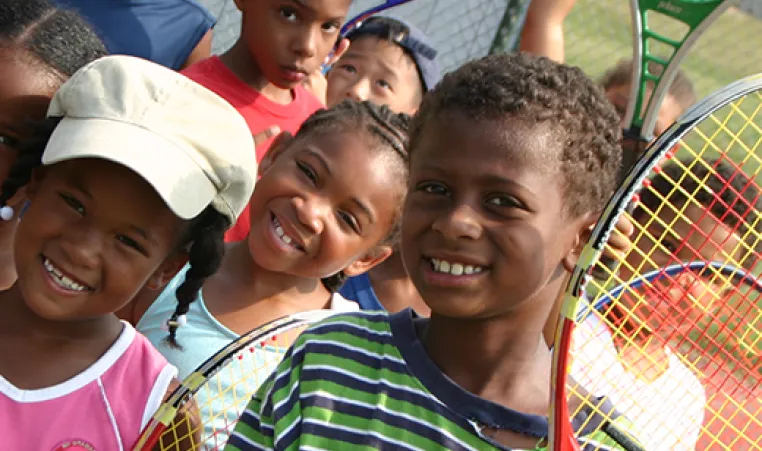
By Ian Thompson, YMCA Tennis Pro
At the Y, youth sports programs focus on building character and a love of the game almost as much as we focus on skills building. But the Y is also dedicated to teaching the necessary skills for athletes to grow in their sport and reach their personal goals.
Much of what is taught in youth tennis is up to the discretion of the professional based on what they see from the child. But here are the basic foundations that need to be taught to kids at each age range. It's easy to understand why training needs to start early if your child wants to be the best!
Ages 7-9
- Stroke foundation – Forehand, Backhand, approach, serve, return of serve, overhead, volleys and lob. (Dropshots and spins come later).
- Basic footwork patterns are being developed from basic recovery, moving to hit the ball on the run, and how to move in for short ball and back for the overhead.
- Basic tactics are also taught at this age on how to hit the ball away from the person. Large targets are ok just a basic understanding of strategy should be developing.
Ages 10 – 11
- Grip correction and footwork understanding – At this time all the grips should be correct. Eastern to semi-western forehand, continental volley, overhead and serve.
- Footwork patterns should be more detailed. Side to side, recovery, and up and back should be mastered.
- New footwork introduced is hop step, break step, return step and cutting off angles.
- Spins should be introduced as well as the dropshot since they will understand why they are using it at this age. Slice and topspin should also be introduced. The kick serve is something that should wait until the child is in the weight room although some professionals will disagree. I feel the child needs more development before hitting a kick serve or there could be problems which can result in injuries in the future.
Ages 12 – 14
- Mastery of footwork taught, grip retention, strategy and tactic detail, mastery of spin.
- All footwork patterns listed above should have signs of mastery or near mastery.
- Grips should not be slipping at all to old grips and all correct grips should be used.
- More detail on how to attack the ball, work the point around and more thought on setting up points should be emphasized.
- By now the player should have the ability to hit 3-4 different types of topspin from the bender, dip drive, topspin, and lob to the underspin of the slice and dropshot.
- Players should also be in the weight room at this age 13+ (working with a personal trainer – the Y has trainers you need).
Ages 15+
- Weight training, footwork, and strategy work – Most of the focus should be on how to play matches and setting up points to win.
- Footwork should be practiced daily, along with the uses of the spins and how to set up the point. The player should have great anticipation for where the ball will be hit and understand how to turn defense into offense or neutral.
- Players at this age must also understand their long-term potential whether it is competing for high school teams, going to college and higher, or just having this as a great exercise and way to meet new people when they get into the workforce.
Much of this information can be adapted based on how you see your child or player growing and advancing in the game. In order for a player to reach their potential, both the coaches and parents must work together for the betterment of the child. The most important thing is instilling and nourishing your child's love of the game!
